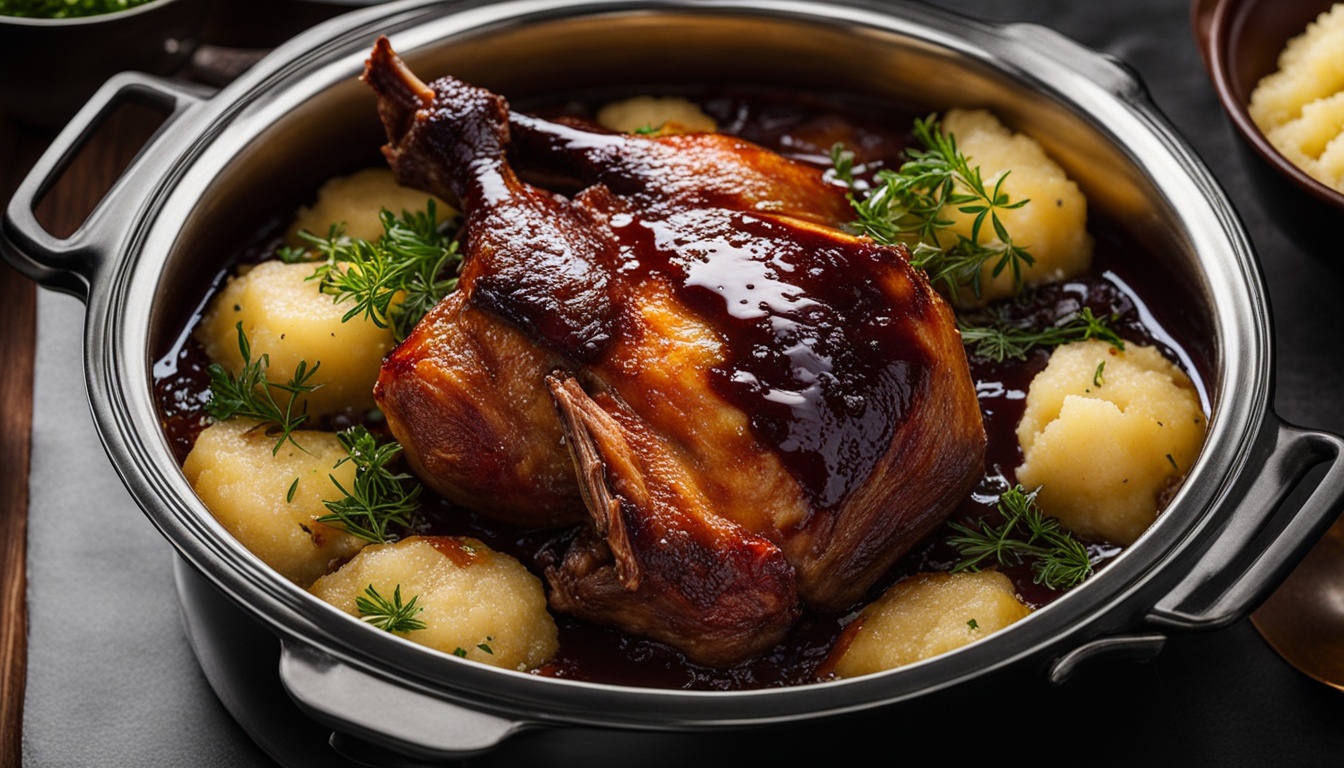When it comes to cooking duck legs, achieving that irresistible silky and tender texture can be a challenge. But what if we told you there’s a cooking method that can give you consistently perfect results every time? Say hello to sous vide duck confit!
Traditionally, confit involves gently cooking the meat in its own rendered fat. But with sous vide, you can achieve the same results without the need for copious amounts of fat. The tight space of a vacuum-sealed bag holds just enough fat that renders from the duck leg, creating that submerged effect without the extra effort. Plus, the precise temperature control of sous vide ensures that the duck legs turn out insanely silky and fork-tender.
So, are you ready to take your duck confit game to the next level? Let’s dive into the benefits and learn how to make the best sous vide duck confit at home!
The Benefits of Sous Vide Duck Confit
When it comes to cooking duck confit, sous vide offers a range of advantages that make it the best method for achieving the perfect results every time. Let’s explore the benefits that sous vide brings to this classic dish.
Precise Temperature Control
One of the key advantages of sous vide cooking for duck confit is the precise temperature control that it provides. Unlike traditional methods where you have to monitor the stove or oven closely, sous vide allows you to set the water bath to the exact temperature you desire, typically around 155°F.
This accuracy ensures that the duck legs are cooked to a perfect tenderness, resulting in a melt-in-your-mouth texture that is hard to achieve with other cooking techniques.
Reduction in Rendered Fat
Another significant benefit of sous vide duck confit is the reduction in the amount of rendered fat required. In traditional methods, a generous amount of fat is needed to submerge the duck legs completely, leading to a rich flavor but also a heavy dish.
With sous vide, the vacuum-sealed bag traps and retains the small amount of fat that renders from the duck legs during cooking. This fat is enough to flavor the meat and achieve the desired confit texture, eliminating the need for an excessive amount of additional fat.
Consistently Crispy Skin
Sous vide duck confit also ensures a consistently crispy skin, a hallmark of this classic dish. After cooking the duck legs in the water bath, you have the option to finish them in a hot skillet or under the broiler to crisp up the skin.
This final step gives you the best of both worlds – the tender, succulent meat achieved through sous vide cooking, combined with the irresistible crunch and texture of perfectly crispy skin.
With its precise temperature control, reduction in rendered fat, and the ability to produce consistently crispy skin, sous vide is undoubtedly the easiest and most reliable way to create the best sous vide duck confit that will impress your family and guests. Get ready to elevate your cooking game and indulge in this decadent culinary delight.
Stay tuned for the next section, where we will share a step-by-step guide on how to make sous vide duck confit at home.
How to Make Sous Vide Duck Confit at Home
Making sous vide duck confit at home is easier than you might think. To start, you’ll need duck legs, salt, herbs, and optionally, duck fat or olive oil. Rub the duck legs with a salt and herb mixture, then seal them in a vacuum-sealed bag with a small amount of fat. Cook the duck legs in a water bath set to a precise temperature, typically around 155°F, for 12 to 24 hours.
Once cooked, you can refrigerate the duck legs or proceed to finish them off in a hot skillet or under the broiler to crisp up the skin. The resulting sous vide duck confit will be incredibly tender, flavorful, and impressive. Remember to refrigerate any leftovers in an airtight container to maintain freshness.
